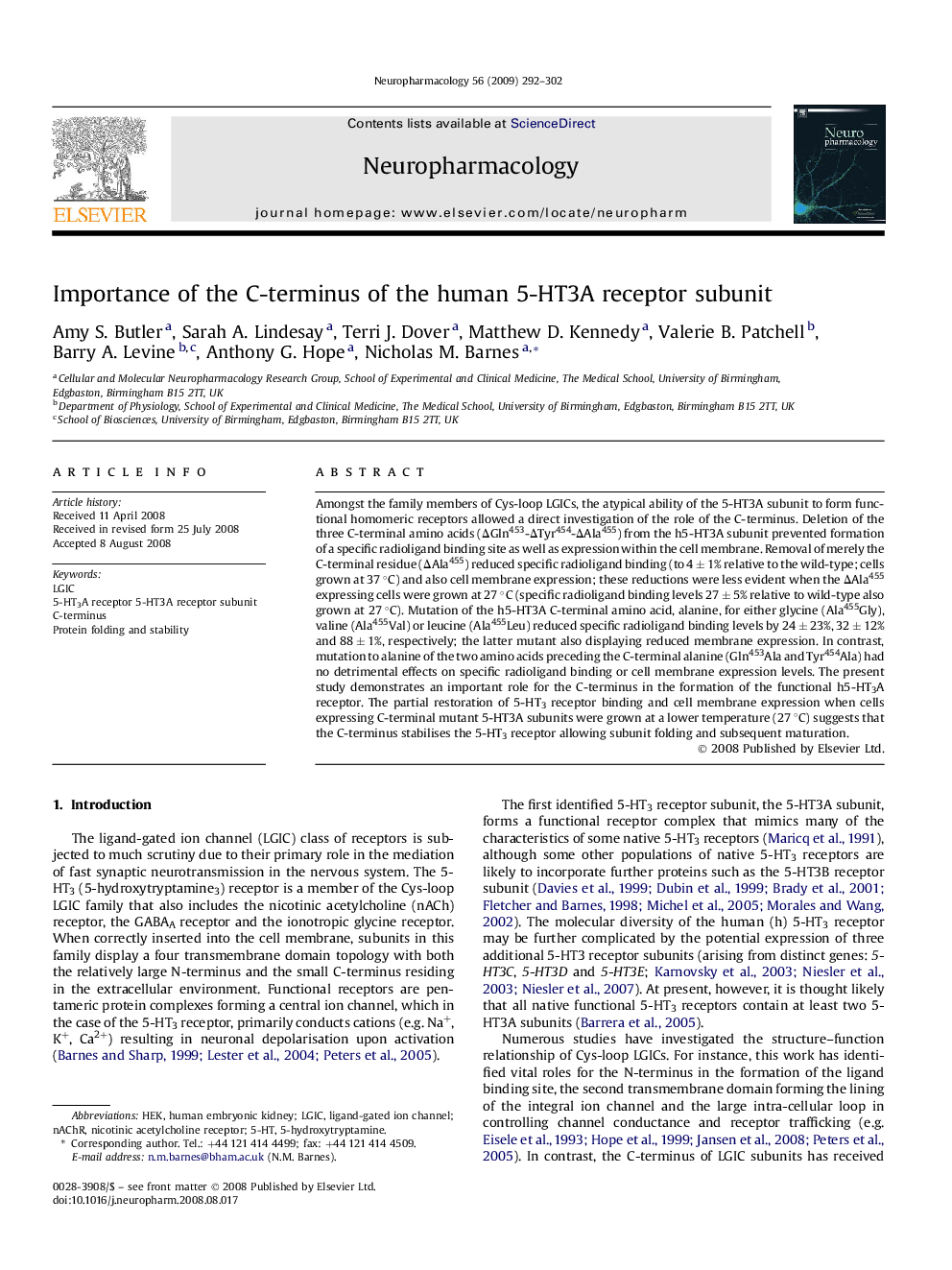| Article ID | Journal | Published Year | Pages | File Type |
|---|---|---|---|---|
| 5816215 | Neuropharmacology | 2009 | 11 Pages |
Abstract
Amongst the family members of Cys-loop LGICs, the atypical ability of the 5-HT3A subunit to form functional homomeric receptors allowed a direct investigation of the role of the C-terminus. Deletion of the three C-terminal amino acids (ÎGln453-ÎTyr454-ÎAla455) from the h5-HT3A subunit prevented formation of a specific radioligand binding site as well as expression within the cell membrane. Removal of merely the C-terminal residue (ÎAla455) reduced specific radioligand binding (to 4 ± 1% relative to the wild-type; cells grown at 37 °C) and also cell membrane expression; these reductions were less evident when the ÎAla455 expressing cells were grown at 27 °C (specific radioligand binding levels 27 ± 5% relative to wild-type also grown at 27 °C). Mutation of the h5-HT3A C-terminal amino acid, alanine, for either glycine (Ala455Gly), valine (Ala455Val) or leucine (Ala455Leu) reduced specific radioligand binding levels by 24 ± 23%, 32 ± 12% and 88 ± 1%, respectively; the latter mutant also displaying reduced membrane expression. In contrast, mutation to alanine of the two amino acids preceding the C-terminal alanine (Gln453Ala and Tyr454Ala) had no detrimental effects on specific radioligand binding or cell membrane expression levels. The present study demonstrates an important role for the C-terminus in the formation of the functional h5-HT3A receptor. The partial restoration of 5-HT3 receptor binding and cell membrane expression when cells expressing C-terminal mutant 5-HT3A subunits were grown at a lower temperature (27 °C) suggests that the C-terminus stabilises the 5-HT3 receptor allowing subunit folding and subsequent maturation.
Keywords
Related Topics
Life Sciences
Neuroscience
Behavioral Neuroscience
Authors
Amy S. Butler, Sarah A. Lindesay, Terri J. Dover, Matthew D. Kennedy, Valerie B. Patchell, Barry A. Levine, Anthony G. Hope, Nicholas M. Barnes,
